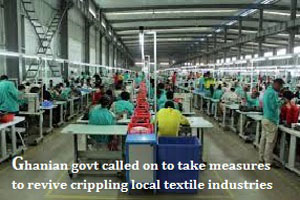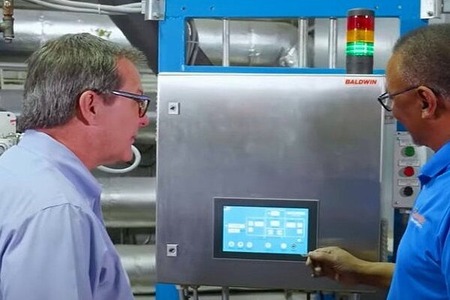
Ghanian govt called on to revive crippling local textile industries
YarnsandFibers News Bureau 2016-12-17 12:00:00 – AfricaThe growth of Ghanian local textile industry due to smuggled goods into the country, unstable exchange rates, influx of Chinese products and high utility is hindered. The in-coming Ghana government of the New Patriotic Party (NPP), has been called on to take some measures to revive the crippling local textile industry and help create an enabling environment for local textile industries to grow., said Mr Samuel Hemans-Arday, Deputy Marketing Manager Akosombo Textiles Limited (ATL).
Mr. Hemans-Arday cautioned that if the current economic situation persist, ATL would be pushed to lay workers off or close down the spinning and weaving sector which employs about 500 people and resort to importing gray cloths for production. They have moved from employing about 3,000 people to 1,100 currently.
In order to prevent fabrics smuggling into the country, the government should consider allowing only one border for importing fabrics, preferably the Tema Harbor. This would help curb the problem of smuggled goods and the government could earn some revenue from the tax or import duty paid.
Besides avoiding duty payments, these smuggled goods usually copy their logo, design and brand and they sell it cheaper on the market. Fake fabrics are smuggled into the country.
He added that the custom officers and authorities at the various borders should be able to identify these fake goods and take the appropriate action against smugglers.
Because of these challenges, the local textiles industries such as Printex, GTP and ATL inclusive run their machines three times a week instead of five times a week. To achieve 50 percent production capacity a textile company must run five times in a week on three shifts.
Mr. Hemans-Arday also recommends reconsideration of the VAT rate for the local industries. The government can decide that the Textile industries pay VAT rate of 5 per cent to help the local industries compete with the Asia Products. As Asian textile companies, for instance China, get 13 percent export incentive on any export they do. So they can decide to sell their products at the cost price and then keep the rebate as their profit.
The cost of production has been very high for local industries. Besides paying high duties for the importation of raw material, high utility tariff, paying Social Security and National Insurance Trust (SSNIT) contribution for each staff and high cost of raw materials has made production very expensive.
Ghanian textile industry makes use of black oil for their production, which is a petroleum by product but it is more expensive than even petrol which should not be the case. Chinese companies use steam which is free to run their machines. Energy cost is also crippling the textile industry, Hemans-Arday said.
The government should give a concessionary tariff for local industries in terms of energy and water for all industries, reduce interest rates and also ensure the cedi stability.
Moreover, the interest rate on loan is 30-32 percent which is too high for companies, making it difficult for companies to invest, reap profits and pay back loans. Some bank even has a rate as high as 40 percent. The exchange rate is also not too stable.
Despite all these challenges, ATL part of the CHA Textile Group of companies, a leading textile multinational conglomerate remains the only vertically integrated manufacturing company noted for its quality cotton fabrics..
Market Intelligence
Ask for free sample Report

experience
Customer Base
dedicated team
Countries Served Worldwide









